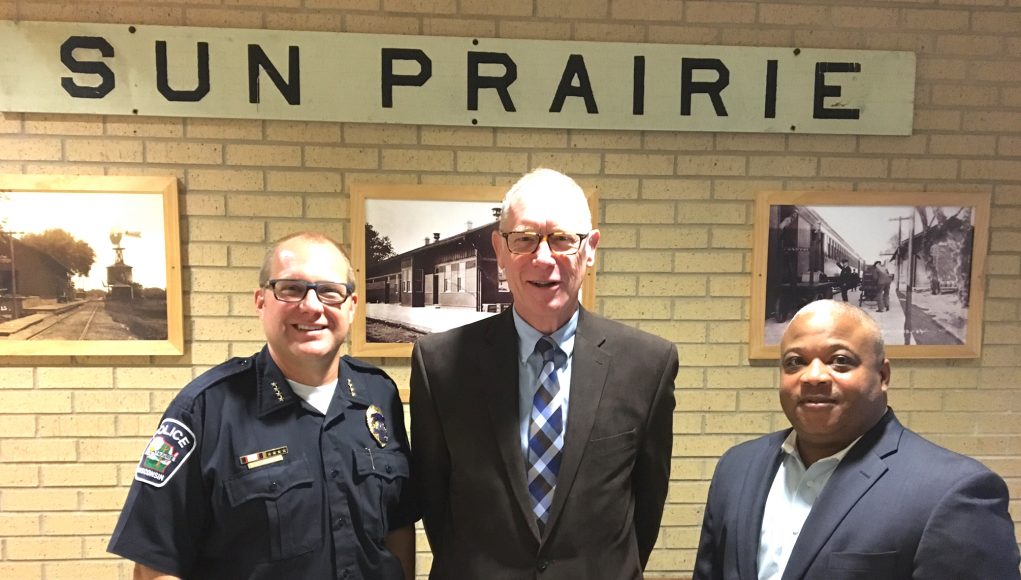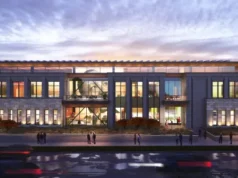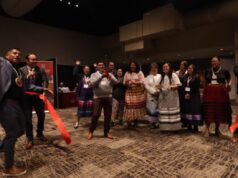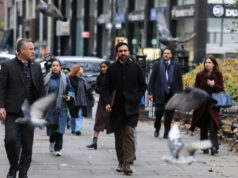As the second-most populous city in Dane County and one of the fastest-growing cities in Wisconsin, Sun Prairie is a unique and interesting Madison suburb. But along with that tremendous growth has come some demographic changes that have left some Sun Prairie residents — older ones, especially — a little leery and apprehensive.
Sun Prairie Mayor Paul Esser is not one of those folks. Esser has lived in Sun Prairie for 46 years and has seen his city go from a rural, detached community to a vibrant and thriving urban satellite, and for a little over year he has made it a priority to embrace Sun Prairie’s growing diversity with open arms.
“There are plenty of people like me here. I moved here in 1970 and there were 10,000 people in the city. Probably half of those 10,000 people are still alive. Older, white males have a hard time embracing the change as readily,” Esser tells Madison365. “Some people say, ‘We dealt with that issue back in the ‘60s and ‘70s. Why are you bringing it up again?’ It’s difficult for me to understand that mentality. When you get around people who aren’t older white males, you don’t hear that this is a finished issue. It’s a dynamic issue that we are still trying to resolve and there are a lot of people who don’t feel like they are part of this community. They live in it, but they aren’t part of it. And we’re trying to bring them into it.”

Sun Prairie has a population of 30,395 and growing, according to 2013 estimates from the Wisconsin Department of Administration. Esser says that currently 20 percent of the population are not straight white people. “That population is growing at one percent a year,” he says. “We know that by the middle of this century, us white people are going to be in the minority in the United States.”
Sun Prairie and Dane County won’t see that particular tipping point at mid-century, but the make-up of its city and counties will be tremendously more diverse.
“The significance of that – and this is where I started my conversation with it – really dawned on me as I was running for mayor two years ago,” Esser says. “I thought to myself: What do we need to do in Sun Prairie so that in 20 or 30 years from now when our children and our grandchildren are looking for a place that they want to establish themselves, that Sun Prairie is a desirable place to be?”

Want to know what the future of your city looks like? Look at the youth. Currently, one-third of Sun Prairie students are children of color.
“People who are young – under 40 today – they don’t think that diversity is an issue. They think this whole diverse people living together, working together, is just the way it ought to be,” Esser says. “It’s us older people that have brought our resistances with us and we’re resisting the change. That’s where my mantra of ‘embrace or resist’ is the issue. If we choose to embrace it, we are going to create a community here in Sun Prairie where people are going to want to live because it reflects their values.”
A lot of people in Madison think of Sun Prairie as a small, conservative town that is not very forward thinking. Esser will quickly tell you that this is not the case.
“When you look at the voting in the last several elections, it is a very progressive community,” he says. “It’s gone 70 percent for Obama in the two elections he was on the ballot. I think the climate in Sun Prairie has changed substantially and what we are talking about we are not out of tune with that.
“I meet a lot of parents who have young children in the school system who are oftentimes looking for settings where their children are around diversity because they see that for the future of their kids,” Esser adds.
Many small towns in Wisconsin simply forever remain small towns in Wisconsin. The same people stay in the town because their job is there or they have family there. Sun Prairie is different. Its proximity to Madison makes it an interesting city and many people even consider Sun Prairie to be an extension of Madison’s east side. “We could get this to be a place that all people want to come to because we are saying ‘These are the things that we believe in,’” Esser says. “Sun Prairie has so much potential.”

At Esser’s side is Sun Prairie Chief of Police Patrick Anhalt who has had an even longer commitment to diversity. He fundamentally approaches his job from a community policing standpoint. “Being a Sun Prairie kid, I’ve had an up-close look at change in Sun Prairie,” Anhalt tells Madison365. Anhalt was born in Sheboygan, but his family moved to Sun Prairie when he was four years old and he has been in Sun Prairie since. “I’ve been with the Sun Prairie Police Department for about 24 years. From both being a community member and within the Sun Prairie Police Department, I’ve had that up-close look at the change in Sun Prairie.”
Anhalt has been the police chief of Sun Prairie since 2009. “In my first interview with the police and fire commission, we talked about making the police department reflective of this community,” Anhalt remembers. “That was one of my very first priorities. And the police and fire commission has embraced that, the police department has embraced that. We’ve made some progress, but we still have much more work to do.”
One thing that Anhalt learned early on as he was recruiting is that it’s important to get the word out in non-traditional places. “It’s that individual contact that means so much more,” he says. “We consider everybody in the police department to be a recruiter, so our officers are making contact with individuals and I’m constantly recruiting. We’re recruiting from the community.”
Both Anhalt and Esser play significant parts in the Diversity Committee that was created in Sun Prairie that is beginning to make a difference on some of the issues. A little over a year ago, the Sun Prairie City Council adopted a resolution creating an ad-hoc committee focused on enhancing the diversity of the City of Sun Prairie’s workforce and ensuring that all City residents are able to participate in and benefit from City services.
“I took that idea of what the United States and Sun Prairie will look like in 30 years and I said, ‘What do we need to do now that will make Sun Prairie that place in the future?’ It’s great to talk about up here at the 30,000-foot level. It’s much easier because then all of the actions that make things happen don’t come into play,” Esser says. “But, in discussion with our city administrator we began taking these ideas and talking about: What could the city do? What could we actually make happen?”
They hit on two things. One was making sure they were bringing diverse candidates to work for the city and discussing what steps it would take to get to that. Secondly, they wanted to know what they might be doing in the city government to keep people from accessing city services.

“With those two ideas in my mind, we created the ad-hoc steering committee on diversity of people that could address these issues,” Esser says. The Diversity Committee is made up Esser and 16 other people. “It’s a diverse group of people both in terms of ethnicity and race but also in terms of sexual orientation and gender identity. And age – we have two people who are high school students up to the age of where I am – I’m retired. We have been very well supported by the city staff.”
Trying to get the labor force of the City of Sun Prairie to resemble the city of Sun Prairie is an immediate priority. Historically, the people in positions of power in Sun Prairie have been pretty white, pretty male, and pretty straight.
“We want to hire the best people we can, regardless of the diversity issue. We went back and started looking at our human resource policies and we went through the whole gamut of things,” Esser says. “As we went through that process, I was really struck by the fact that good human resource policies will ensure that we attract good candidates. And if we expand that pool of candidates by going where the diverse candidates might be, we are going to end up increasing the diversity of the city.”
It’s not something that will happen overnight, but it’s something that has clearly been an attitude change going on in Sun Prairie. “The people that run this city — both the elected officials and the department heads – we all tend to be a white group of people,” Esser says. “And if the natural course of things is that we hire people who look like ourselves we run the risk of perpetuating this. We’re committed to finding good people and we’re committed to going where the diverse people are. We’re making some progress in that.”
One of the final benchmarks of success for Sun Prairie will be when they start electing people for their highest positions who aren’t straight white males. “Right now, we have nine elected officials (eight City Council members and the mayor) who are all white. Seven of the nine are males. And we’re all straight,” Esser says. “We’ve got a lot of work to do there. Until we make that change, we’re only kind of talking about these issues. They are not set in place because the people who are living those issues and having those issues as their daily background are not sitting at the table.”

Attorney Stan Davis, president and owner of the Davis Group, has been working with the mayor and the City of Sun Prairie for a little over a year. The Davis Group offers solutions for recruiting, retaining and training a successful and diverse workforce, and Davis has been serving as consultant to the City of Sun Prairie and serves as the facilitator of the Sun Prairie Diversity Committee. The public listening session put on by the Diversity Committee tackled a lot of topics like health, education, transportation and economics. Davis says he was taken aback at a recent listening session when the issue of housing came up.
“That had not been on our radar at all. It really validated the idea of getting out and hearing from the people to figure out what the issues were,” Davis says. “The mayor really wanted it to be an open conversation and to hear from people and we really got an earful on an issue that we had not identified. So, it showed the importance of getting out and hearing from people.”
“I’m a white liberal,” says Esser. “I’ve never been housing challenged. I’ve never had a time in my life where I didn’t know where would I was going to stay the next day. To listen to somebody talk about it who has a steady job and a steady income and a dependent living with them at home and the landlord is saying, ‘Your lease is coming to an end and I’m not going to renew it,’ because the market is such that they can go elsewhere and get somebody who is more desirable. I’ve never experienced that.” Esser recalls a woman who spoke at a recent meeting describing that very experience. “It was very real. Very powerful.”

The woman who spoke about her dire housing situation would have never had a chance to share her story in Sun Prairie without that meeting. “There are so many stories out there that we need to hear. Otherwise, we just sit in this room [at Sun Prairie City Hall],” Esser says. “It’s easy for us to sit in this room for two hours twice each month and say, ‘we’re going to deal with diversity’ and then we leave and go back to our lives – none of those issues touching our lives.”
Just the ability to be able to sound off and have people listen who can make a difference is so important. Esser likes that it makes more and more people in Sun Prairie politically active.
“One of the takeaways I had from that last meeting is that it was not really well publicized and about 40 people were there,” Davis says. “That suggests that there is significant interest in this issue in this community. I expect more and more people to be at the table for following meetings.”
The more people who come out to the meetings, the more the Sun Prairie alders will need to take notice. “It has a big influence on us elected types,” Esser says.
“Once you know that people care about this and it’s a priority to people than you have very little choice but to be responsive to that,” Davis adds.
These sessions have helped the Sun Prairie Police Department, too. Anhalt looks at it as an opportunity to continually improve. “Any of us, especially the police department, gets into scary territory if you think you have it all figured out,” he says. “We know we can always do better. I spend the majority time at these meetings listening and learning.
“Most every professional responsive police department in the country is working on building trust,” Anhalt adds. “You can build trust in many different ways. If you’re just focusing on sound hiring and sound policy and sound supervision and being transparent with information, I think you’re missing the boat. Those are all important, but there has to be an additional piece. Real trust only happens when individual relationships are formed. So, we’re a big believer that we need to provide the community with information, but we’re very sensitive to the fact that we need to have those individual and small-group relationships where we can have serious discussions about expectations and priorities … where we can share our capabilities, and, more importantly, our limitations. We can’t do everything for everybody.”
Real conversations with real people. Community engagement. Involvement.
For instance, Anhalt talks about a RED Latina event he was at the previous weekend enjoying a Mexican meal at the Sunshine Supper space. He is also a big fan of the Friday Nights at the Y program that has been going on in Madison’s east and west location for years and has recently come to the Sun Prairie YMCA.

“It’s a fun, positive thing for kids to do on Friday nights … a productive activity,” Anhalt says. “As we know, when kids don’t have something productive to do they may look for something to do that might be an activity that might be negative. More importantly, Friday Nights at the Y is an opportunity for these EMTs and firefighters and police officers to interact individually with these kids. We play basketball and dodgeball and other games, but I see a real benefit when I’m sitting on the sidelines talking to a kid about life. I learn some things, and hopefully they see me as a normal person outside the uniform.”
“I knew they were doing something right with this Friday night event this summer because my kids asked to go to it every Friday,” Davis adds. “There are plenty of things kids can get into on a Friday and they are asking to go where the police are. That’s pretty good stuff.”

Anhalt says he is constantly challenging his officers to be involved at every opportunity. “It’s an expectation. And I give our officers a lot of credit,” he says. “We have some very hard-working and talented dedicated cops that believe in our mission statement which is: ‘We will build relationships and solve problems.’ We expect that community engagement/building relationships piece comes with the job. It’s just as important as taking a lot of police calls.”
In the end, an ounce of prevention is worth a pound of cure. “The officers become role models for these young people,” Esser says. “They aren’t evil. Some young people may be reluctant to interact with police because of what they’ve heard and now they see the officers there and they know them and they see them day after day. The relationship is so important. We are building those.”
None of the many initiatives that the City of Sun Prairie is doing right now to address their growing diversity are rocket science. It may, at the very worst, involve getting out of your comfort zone for a little bit but the people of Sun Prairie, overall, seem to understand the long-term advantages of embracing diversity.
“Governments, companies, sporting teams – any set of people that you want to bring together to try and do something positive are going to be more effective if they have a broader range of ideas that they are bringing to the table,” Davis says. “Yeah, that’s not rocket science.”
“When Stan [Davis] and I first met about a year ago, he really impressed on me early on how the need for diversity is an economic issue,” Esser says. “If we look at it only as a social issue, we’re missing the point. We’re never going to solve it. It’s an economic issue. If we get everybody in the community engaged in the community, working in the community, then they are consuming in the community … it’s an economic solution and it betters everybody’s position. It’s good for everybody. It will make our city stronger in the long run.”
A public listening session of the Sun Prairie ad hoc Steering Committee on Diversity will be held Wednesday, Sept. 28, 6 p.m. at Bird Elementary School in Sun Prairie.










